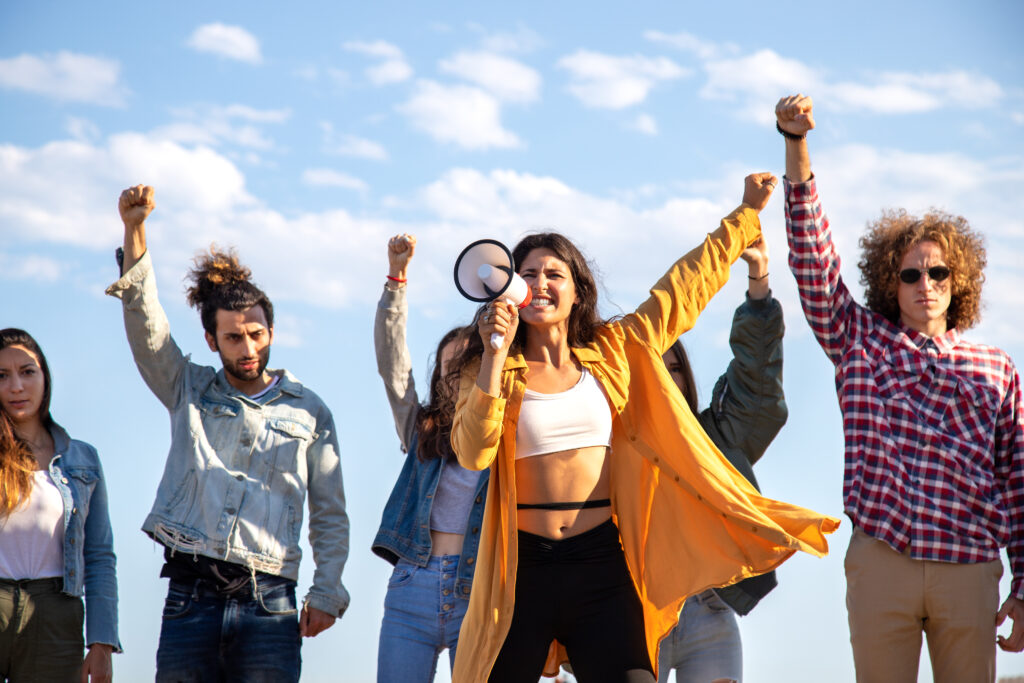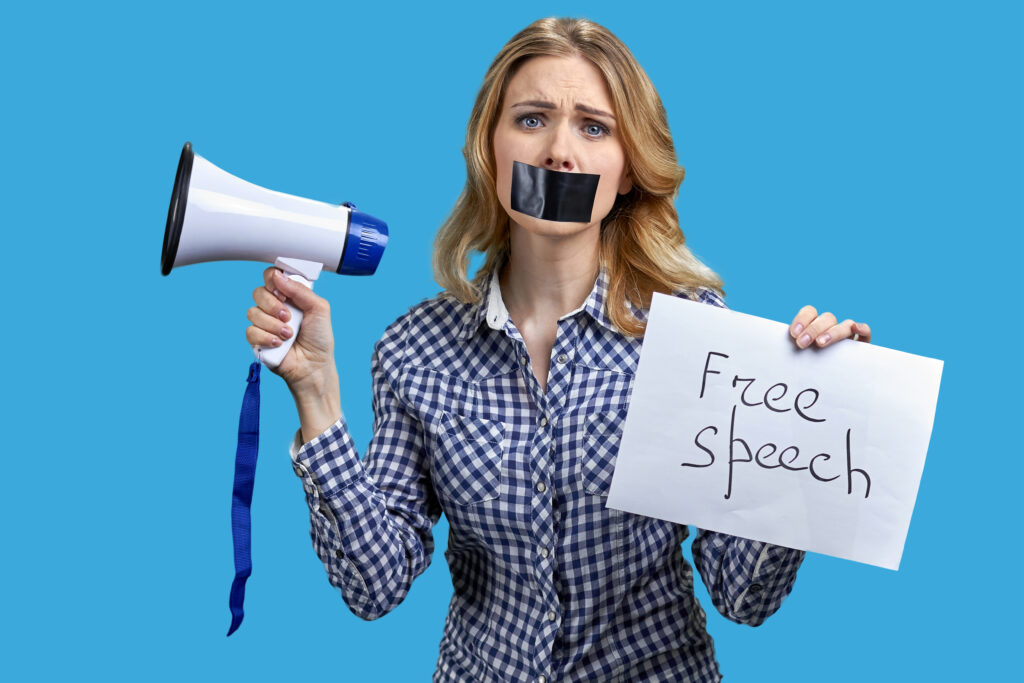The Most Awaiting App of the Year.
SOCIAL MEDIA
RE-ENVISIONED
Become a Runner and contribute to comments across social media in one place where your followers get to focus on you and not unsolicited contents. As a Runner your contents, speech, privacy and account is protected from executive actions. Get the right content to your network.
PROBLEMS WE SOLVE

VOICE AMPLIFICATION
Social Media is a big place where your thoughts and opinions can be lost in translations or used against your interest. News Runner allows your you or the Runners you follow to be the content aggregators for each other by what you share; therefore allowing you to focus on what matters to contents in your echo system and not a special interest group, agenda, advertiser or a bot.
- Filter Bubble and Echo Chambers: Content recommendation algorithms on social media platforms tend to show users content based on their past interactions and preferences. This can create a “filter bubble,” limiting users’ exposure to diverse viewpoints and information, reinforcing their existing beliefs, and leading to echo chambers where individuals are only exposed to opinions similar to their own.
- Polarization and Division: When users are consistently exposed to content that aligns with their beliefs, it can deepen societal divisions. Extremist or polarizing content might be recommended more frequently, contributing to increased polarization and making it challenging for individuals to engage in constructive dialogue across different perspectives.
- Misinformation and Disinformation: Content recommendation algorithms can inadvertently amplify misinformation by promoting sensationalized or false information that garners high engagement. This can lead to the rapid spread of misleading or fake news, contributing to public confusion and distrust in legitimate sources of information.
- Negative Mental Health Impact: Continuous exposure to certain types of content, especially sensationalized or distressing material, can negatively impact mental health. Content recommendations that prioritize engagement over well-being might lead to increased stress, anxiety, or depression among users.

CENSORSHIP FREEDOM
We at News Runners give you a safe non political space. We protect our Runners from politically driven censorship, by never putting an account out of business but rather limit them to personal followers that are in their contact list if they violate our use terms. Your Runner account channel helps keep your presence on Social Media if or when other platforms suspend your account.
- Suppression of Free Speech: When social media platforms censor content, it may limit the freedom of expression and hinder open dialogue. While platforms may aim to remove harmful or false information, there’s a risk of suppressing legitimate discussions or dissenting opinions, potentially impeding free speech.
- Bias and Selective Censorship: There’s a concern that social media platforms might apply censorship unevenly, based on their own biases or the biases of their moderators or algorithms. This can result in the uneven treatment of different viewpoints or communities, leading to perceived unfairness and exacerbating social divisions.
- Limiting Access to Information: Over-censorship can restrict access to valuable information, especially in regions where social media might be a primary source of news and information. Filtering out content, even with good intentions, might deprive users of diverse perspectives or critical information.
- Chilling Effect on Innovation and Creativity: Stringent censorship policies may discourage creativity and innovation as individuals might fear repercussions for expressing unconventional or controversial ideas. This could stifle the potential for new, groundbreaking content and discussions.
- Erosion of Trust and Transparency: Heavy-handed censorship might lead to a lack of trust in social media platforms. Users may feel apprehensive about the transparency and neutrality of content moderation practices, potentially leading to a decline in platform usage.

SOCIAL IMPACT
News Runner users make impact by being relevant to their followers in what they share or take actions on; these in turn brings their contents to the for front for their followers. Here your views matters more than you likes because the views is what changes the status of an account from Runner to Sprinter. News Runner Sprinters have special privileges that allows them to run their accounts as full administrators…
- Global Connectivity: Social media bridges geographical gaps, enabling people from different parts of the world to connect, share experiences, and communicate instantly. This connectivity has transformed how societies interact and exchange information globally.
- Amplification of Voices: It provides a platform for individuals, communities, and movements to amplify their voices, advocate for causes, and raise awareness about social issues. Social media campaigns have played a pivotal role in highlighting societal injustices, promoting social change, and mobilizing support for various movements.
- Information Dissemination: Social media serves as a primary source of news and information for many people. It facilitates the rapid spread of information, allowing users to stay informed about current events and societal issues. However, this also poses challenges with the spread of misinformation and fake news.
- Cultural Exchange and Diversity: Platforms like Facebook, Instagram, and Twitter enable the sharing of diverse cultures, traditions, and perspectives. This exposure to different cultures fosters understanding, tolerance, and appreciation for diversity.
- Influence on Behavior and Opinion: Social media influences public opinion, shapes perceptions, and impacts behavioral patterns. It can sway political opinions, consumer choices, and societal norms through trends, viral content, and influencer marketing.
- Mental Health and Well-being: The use of social media has been associated with both positive and negative impacts on mental health. On one hand, it provides social support and connections, but on the other, excessive use can lead to feelings of inadequacy, anxiety, and depression due to comparison and cyberbullying.

MAXIZE VISIBILITY
Weather you are a news or entertainment website with great contents, or a blogger, or you love leaving comments on contents; your expose is only as great as the platform you are share on. News Runners allows your core viewer or supporters to magnify your presence on a global level where it becomes measurable by the visitors that return to your site or reacts to your comments
- Algorithmic Changes: Platforms like Facebook, Instagram, Twitter, and others utilize complex algorithms to determine the content users see. Changes in these algorithms can affect the visibility of your posts. For instance, if a platform decides to prioritize content from friends over businesses or pages, your posts as a business or content creator might receive reduced visibility.
- Content Moderation and Censorship: Social media platforms have guidelines and policies regulating content. If your content violates these guidelines (even unintentionally), it might be suppressed or removed, limiting its visibility to your audience.
- Competition for Attention: With the vast amount of content posted every second, there’s intense competition for users’ attention. If your content doesn’t engage users quickly or align with what the algorithm determines as valuable, it might receive lower visibility in users’ feeds.
- Paid Promotion Dominance: Social media platforms often prioritize paid advertisements and promoted content over organic posts. If you don’t invest in advertising, your content might have a reduced chance of reaching a broader audience.
- Shadowbanning: Some platforms use shadowbanning—a practice where an account’s content is hidden from users without the account owner being notified. This might happen if a platform’s algorithms flag your account for violating community guidelines or suspicious behavior.
OUR STORY
Tech -Voters Access To Representation in Elections (VareTech Ltd.)
The Vare App new User Interface Platform will be launched at the MPL. The release of this innovative policy engagement platform is designed to empower all voters to be able to influence their Representatives at a Local and Federal Government level. We have developed Vare App as a disruptive social media platform that will change the narrative and get voters involved in legislative actions that impacts them directly. This innovation transforms political engagement, making it as convenient as possible.
AI – Social AI Solution
AI Solutions Company releases an innovative way to use AI in solving issues with
Personalization: AI can analyze user behavior, preferences, and interactions, allowing for personalized marketing strategies. Tailoring content to individual interests improves engagement and conversion rates.
Real-time Insights: Social AI tools can provide real-time insights into consumer trends, sentiments, and preferences. This data helps marketers make informed decisions promptly, optimizing campaigns for better results.
Tech – News Runners App
We live in a time of social media algorithms, where the things we can and can’t see are controlled by someone other than us. Business owners that rely on social media for a wider reach to diverse audiences also have to resort to asking “Can you guys see this?…” posts every now and then just to be sure they’ve not been pushed off the grid. Ads are exhausting but have become cemented in the social media space and by now, we all can agree that we need a breath of fresh air. The News Runners App has created a refreshing social media experience that gives users controll over what goes viral within their respective channels and who gets to advertise in their space.
Program Schedule
January 24, 2024
Minority Product Launch 1Q24
5:00pm – 8:00pm
April 24, 2024
Minority Product Launch 2Q24
5:00pm – 8:00pm
July 24, 2024
Minority Product Launch 3Q24
5:00pm – 8:00pm
October 24, 2024
Minority Product Launch 4Q24
5:00pm – 8:00pm
Join NewsRunners Subscribers
Stay in the loop with everything you need to know.
